The John Muir Trail is one of the most beautiful trails in the world, travels 47,000 feet in the California Sierras – the “Range of Light,” – over seven passes from Yosemite Valley to Mount Whitney, the highest mountain in the contiguous United States.
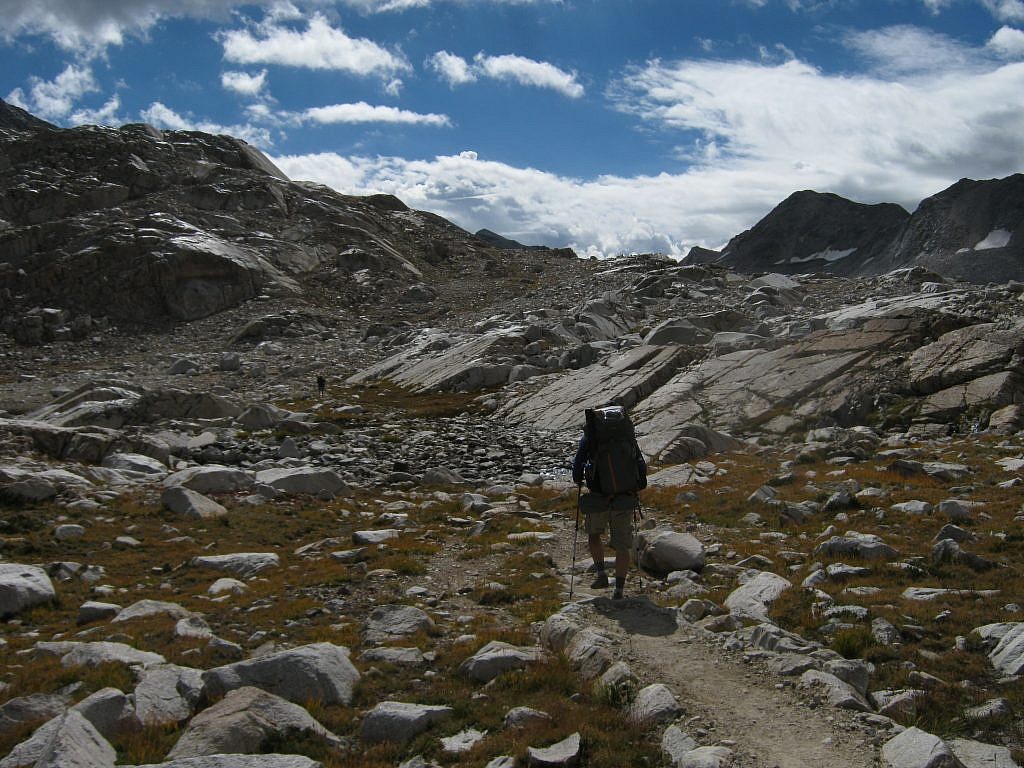
The clearest way into the Universe is through a forest wilderness.
John Muir
Though I didn’t actually see the lightning, in that rocky amphitheater the claps of thunder were full-on scary with a rich sonority that surprised me in their musicality. But taking off my classical musician hat and remembering I was just a hiker with absolutely no protection from the elements except a rain jacket and my wits, I needed to focus and things were getting terrifying.
My guidebook helpfully pointed out what I was now experiencing first hand. Happy little puffy clouds seen earlier in the day invariably grow to a dangerous thunderstorm by mid-afternoon, and as I headed up Muir Pass, real danger surrounded me.
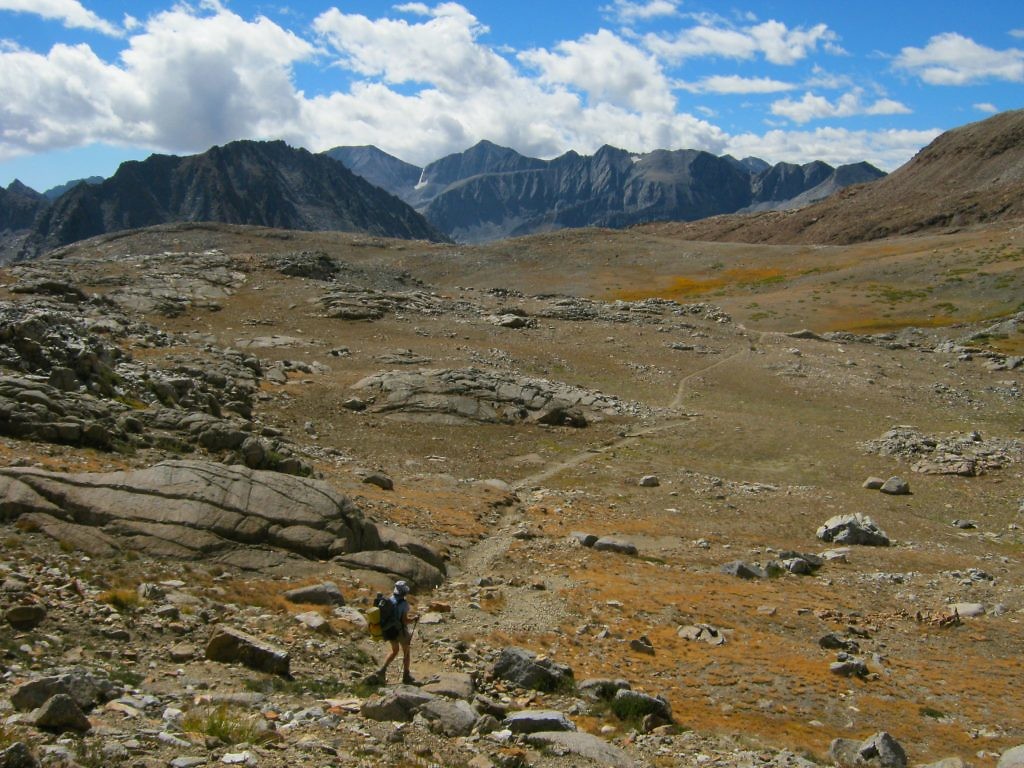
Each footfall crunched on the rock, some big enough to twist an ankle, but most rolling under my boots and slowing progress as I huffed up the switchbacks. Muir is the only pass on this California trail that boasts a man-made hut at its summit and that’s where I was “running,” glancing anxiously down where I stepped, up at the blackening sky, and also out at the awe-inspiring expansiveness of deep blue lakes in treeless bowls bathed in an eerie glow from the building clouds. My breath was rhythmic – and fast. But there’s only so quick you can run up a pass at over 11,000 feet carrying 25 pounds on your back.
But the odd part about it was that as I surveyed the danger, my mind was removed from my own life. Things became simple. Put one foot ahead, then the next, then the next and soon you are equal in height with those mountains that only moments ago were above you. The man the trail was named for spoke of what happens in this place. “Going to the mountains was going home.”
Of course, I made it to the top of Muir Pass. The torrents of rain never materialized; not even a drop. Like many days on this long trail, I kicked back, had a snack, made friends and set about thinking about the only really crucial thing on my mind: where to camp by day’s end.
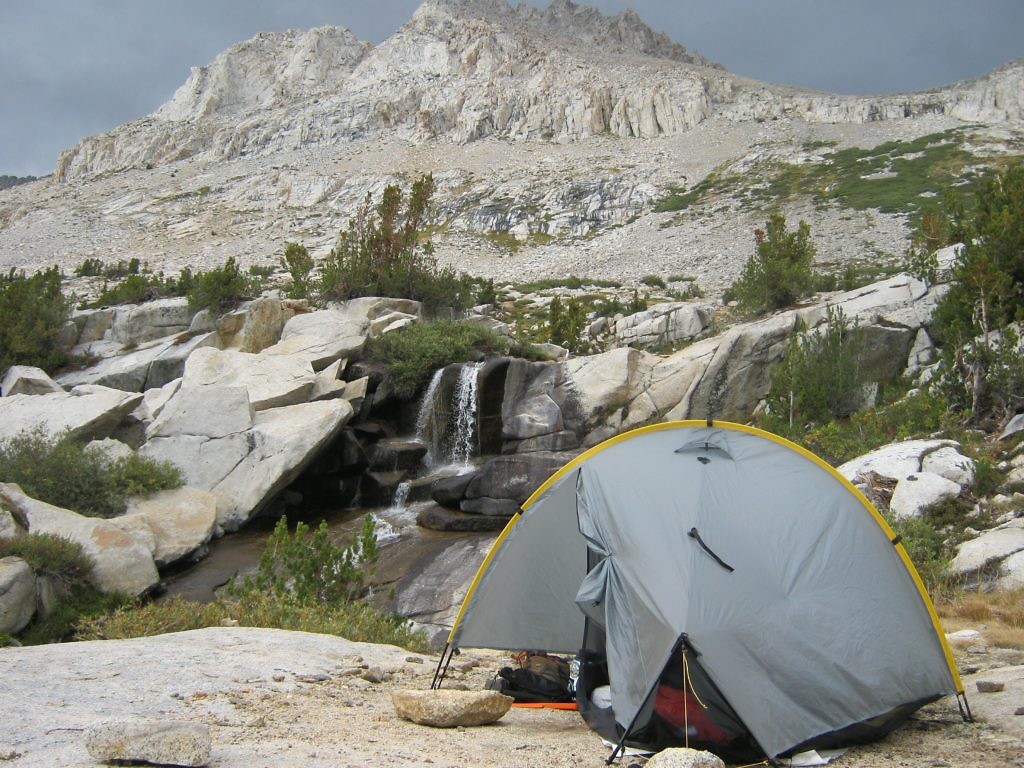
That was day thirteen of the 21 it took me to hike one of the classic long-distance hikes in the world, the John Muir Trail. It takes its thru-hikers up and down six mountain passes with a total of 46,000 feet ascending – and 38,000 descending – through some of the most stunning scenery in the world of lakes, rivers, meadows, forests and of course, mountains.
For me, the mountains called loudly and “going home” was going to come from the simplest act of all. Walking. That basic act of moving forward. Like a pilgrimage, this physicality was what I longed for. Though right from the start I wasn’t so sure it would be that simple as the sign at Happy Isles in Yosemite Valley indicates Mount Whitney’s summit at 211 miles.
But after several hours under hot sun wearing a full pack and elbowing through hundreds of sunburned and tired day hikers, I’d arrive at the top of two waterfalls greeted by a sign that declared Whitney was now at 215 miles. Two steps forward and a few back? Maybe what was ahead was not what I’d expect.
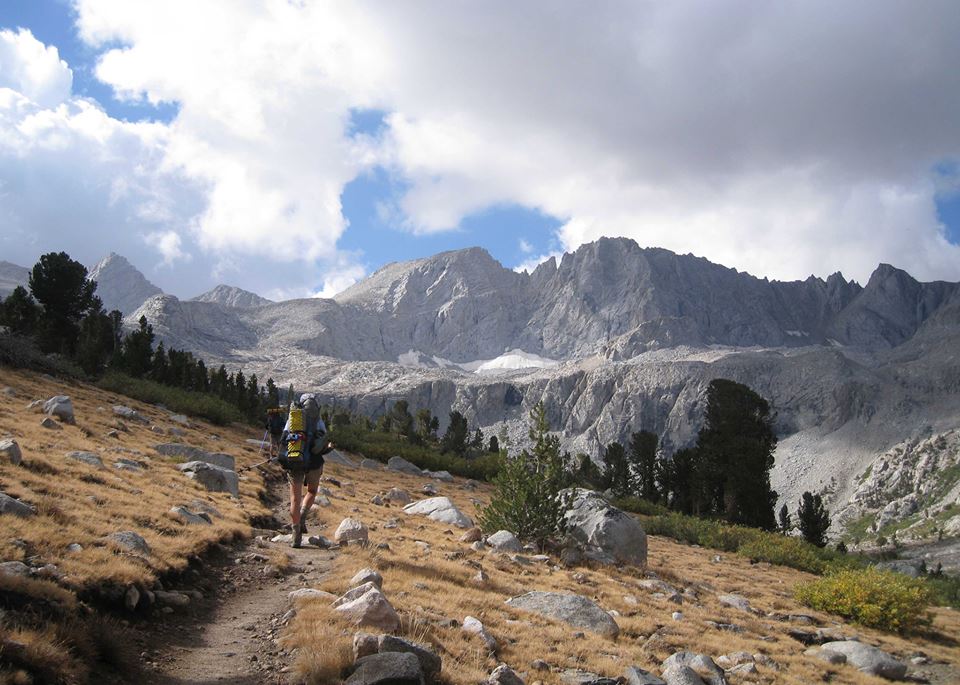
It was expectations that filled my head since I was just 13 and my absentee father somehow scrounged together just the minimal gear the two of us plus my older brother would need to climb Yosemite’s Half Dome. I had never been to the Sierras nor heard of America’s greatest environmentalist, John Muir, but it only took inhaling the balsam rich air, feeling the solid exposed granite under my feet and looking out to what Muir called “The Range of Light” to be forever hooked.
My father’s then girlfriend read aloud to us from John Muir’s poetic and deeply spiritual writings steeped in scientific inquiry. Leave it to a couple of teenagers to make fun of her earnestness behind her back, but I secretly worshiped the man she quoted and found I too wanted to see this world up close and linger as he had – and hopefully have a transformative experience.
But for me it wouldn’t happen for years. Life just got in the way. Until this past year when I found in my real life I was walking a dangerous path that was beginning to shatter my soul and I desperately needed to restore myself. A walk, with all I needed on my back and a diary of haiku, would be my path now.
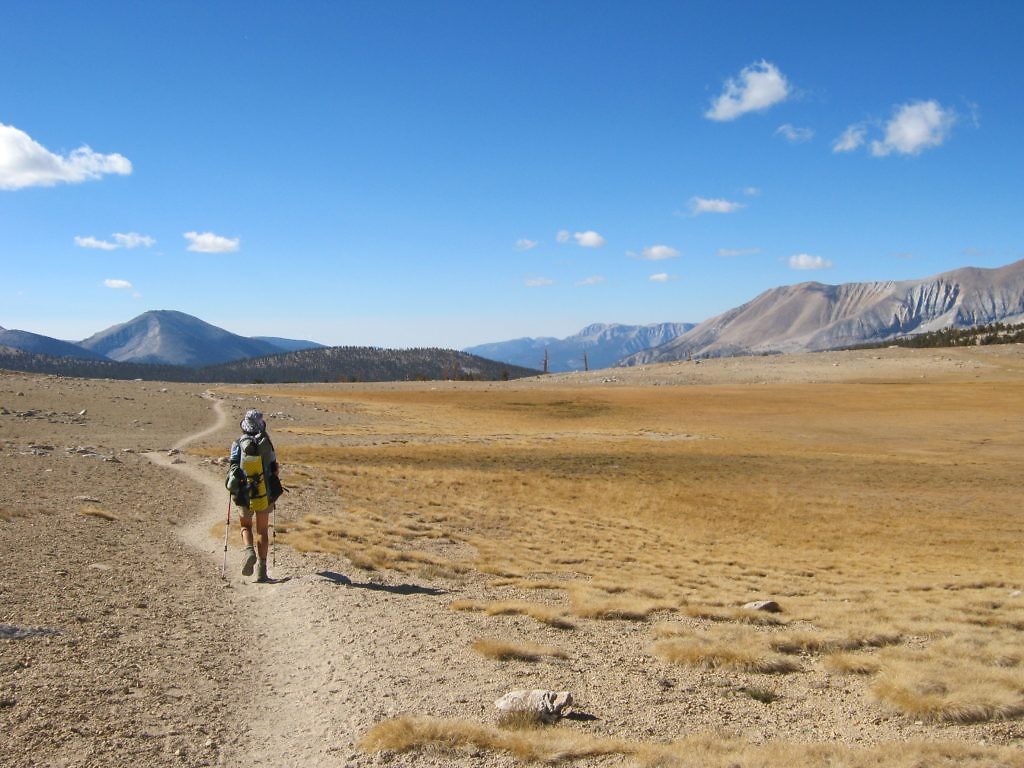
Today, steps counted;
Miles and distances figured.
Where is my rhythm
Each bend in the trail brought something new – and a personal experience to all of us who walked it. I met hundreds of people all there for different reasons. There was “The Brown Hermit” who I saw four times because – of course – he walks each pass twice. I met an 80-year-old man just finishing his seventh JMT as I began my first, leaving me in jaw-dropping wonder. A young Japanese student lumbered up the same day I started but took nearly twice as long to finish savoring every moment in pen and ink. I dined with two retired ladies at my resupply point, Vermillion Valley Resort, who had walked every long trail including the Appalachian, sleeping in hammocks. And I became friends with two British ultra-marathoners who taught me to be brave and believe in myself as I taught them to not make the hike a race.
And there were a few people who inspired irritated flashes of inspiration:
Worst words on summit,
“Got an awesome cell signal!”
Was time to push on.
We all were walking, even if sometimes it was away from someone.
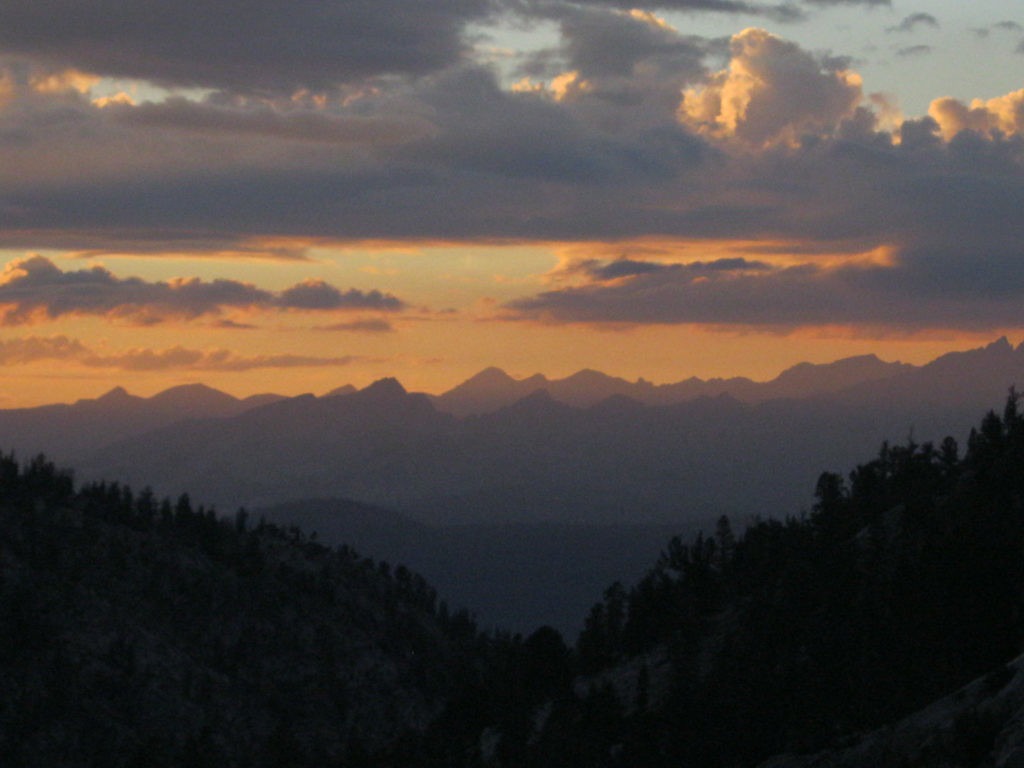
The last day of August was day nine and I struck camp in the dark so I could make my tea as the sun rose above Squaw Lake lighting the ghostly layers of mountains marching off into the distance. A few choice words left my mouth when I felt drizzle, but soon I found my rhythm and glided up the pass trying to make sense of the bright light in the west. As I puzzled, the clouds suddenly parted and I see it’s the setting full moon. I’m awe struck of course, and stay in this mood later when I hear a pack of coyotes howling in a canyon as I make my lunch by a stream tumbling over granite, cascading far below a few brave but gnarled pines working their way into the rock.
So why did I think I could tackle this long-distance trail? I walk to my job at Minnesota Public Radio five mornings a week in every kind of weather, and then back each afternoon up the big stairs at the Hill House on Ramsey Hill. That adds up to 20 miles per week. So in about three months, I’d have done the equivalent walk.
But the JMT is not the Hill Stairs. It’s safe to say there are no easy days on the JMT. Though some have called it the “Disneyland of Trails.” With over 4,000 permits distributed each season, you might feel solitude, but you’re not ever completely alone. California weather is also – for the most part – spectacular, sunny, dry and temperate. And the trail conditions are just shy of extraordinary, with hand-built staircases and in some cases entire sets of switchbacks blasted out of rock faces.
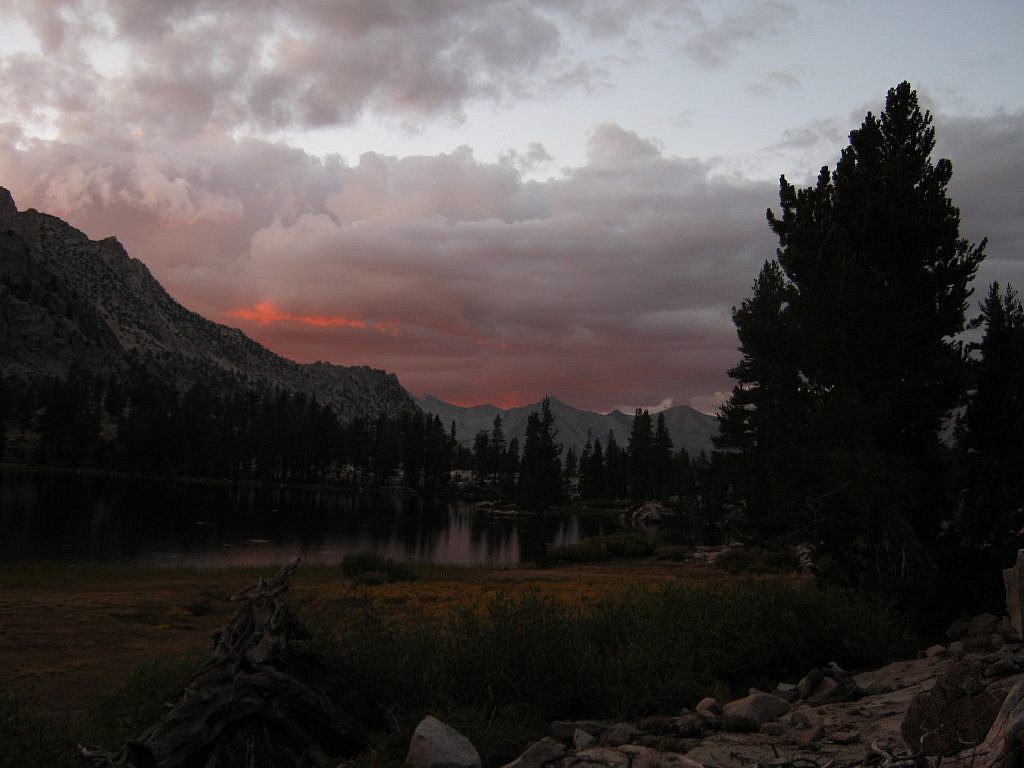
You are truly in a wilderness. High Sierra camps exist and much of the trail can be experienced via horseback or with all your supplies carried by mule train. But in a wilderness you always need to consider the distance it would take – and the elevation gain and loss – to get out. Water has to be treated with drops or pumped through a filter. High altitude has its own set of concerns that if not paid attention to, could lead to serious consequences including death. Black bears co-exist with hikers and all the food needed for the hike – plus anything else that smells tasty like suntan lotion and toothpaste – has to be carried in a bear-proof canister. Mine completely empty added about 2 1/2 pounds to my pack and took about a third of its volume. But it was a necessity worth the hassle.
I traveled late in the season, completing the trail on September 12, so that brought with it the added bonus of no bugs whatsoever, whereas in July – just as in Minnesota – I’d expect clouds of mosquitoes. But the no bug deal of late season meant shorter days and some bitterly cold nights.
But most important, the entire reason for being out there – to walk – does mean you have to move by your own power, every step of the way. Blisters, chapping, chafing, muscle pains, all that comes with relying on your own two feet can mount up and there is a risk that small problems will grow into a nightmare later.
Trusting in my pace.
The day was long, difficult.
Sunset on mountains.
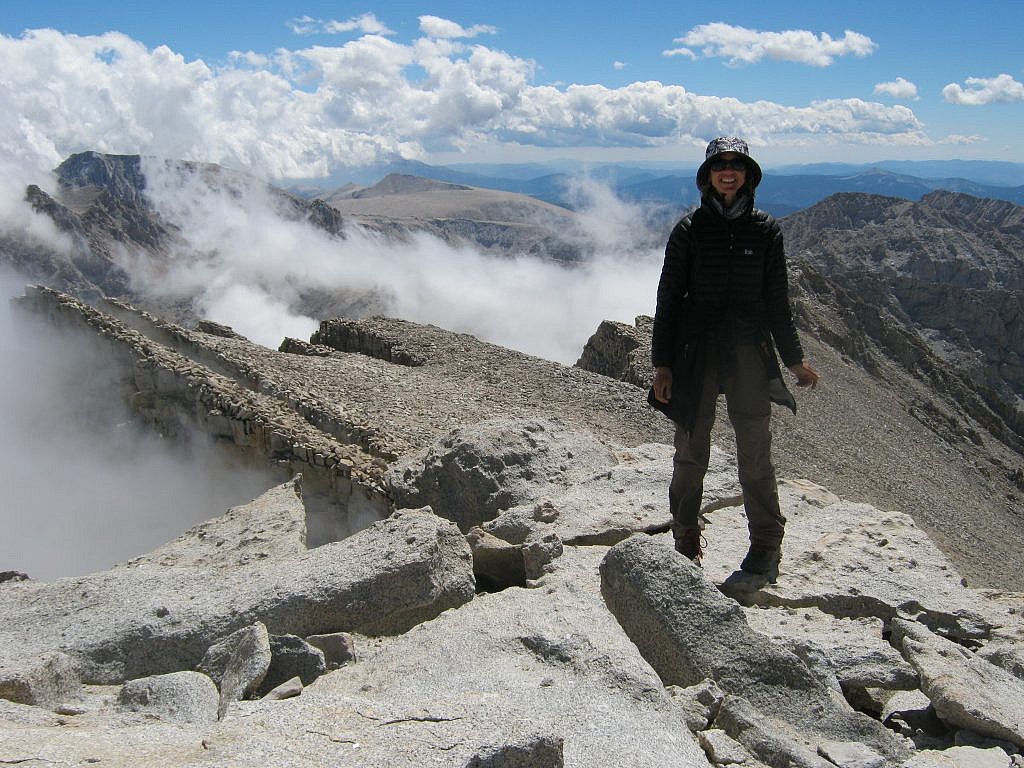
The next-to-the-last day at trail crest, everyone shed their packs in a big long row to walk the final stretch to the terminus. For some reason the top of Whitney ends the JMT, not the trail leading down and out. Huge boulder strewn uplifts in jagged triangles jut into the sky skirting windows to the lakes thousands of feet below and on that day – September 11th – I saw a bizarre weather pattern that sent heaves of steam blowing through and swirling around the view, making the summit feel like an island. As I came closer to the top, I walked faster, harder, not feeling my breath catch at 14,000 feet. As I finished the hike, I became lighter. My troubles, sadness, bad decisions, all of it was left on the rock to be washed away in the next storm.
And that’s all it took – a walk. John Muir tells us “I only went out for a walk and finally concluded to stay out till sundown, for going out, I found, was really going in.” I walked, and the trail itself – its cliffs, valleys, and passes – came to walk me. John Muir is right. The walking is not hard, and in nature – on the trail named for him especially – we are restored.
Looking back at my diary I find the quotidian summed up the day I walked out of the jaw-droppingly beautiful Evolution Valley:
Day twelve, energy up.
Strong legs, breathe. Smiling always.
Dinner ready soon.
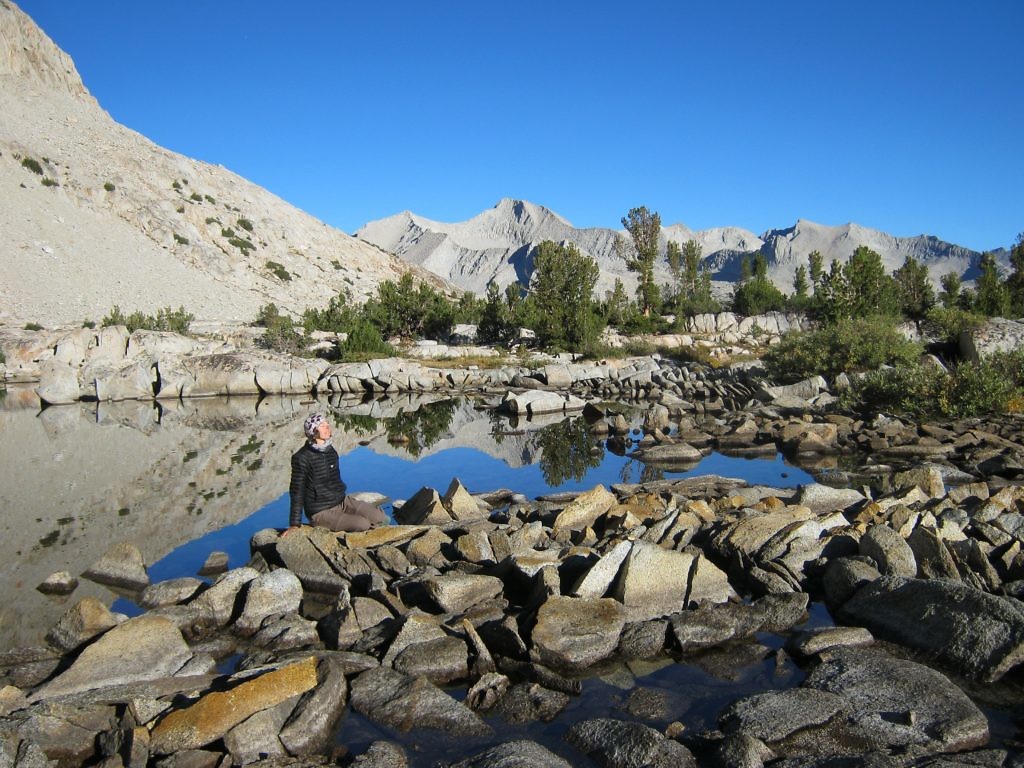


7 Responses